In order to shift the ways in which we study, write, and build architecture, the archive must be rid of its unwritten rules and inaccessibility. Even still, the collection and piecing together of materials can take decades. Entire generations might go by before globally recognizing the work of groundbreaking practitioners that hold the necessary tools for the present.
It took almost 20 years to recognize the work of Ghanaian architect, builder, and environmentalist Alero Olympio who died from cancer in 2005. Not because her work wasn’t important, but because she was so far ahead of the “sustainability” culture that there was not (yet) room for her. Today, that’s finally changed: Her work was recently the center of Alero Olympio: Activated Matter, the eighth annual conference hosted by Princeton SoA’s student organization, Womxn in Design and Architecture (WDA).
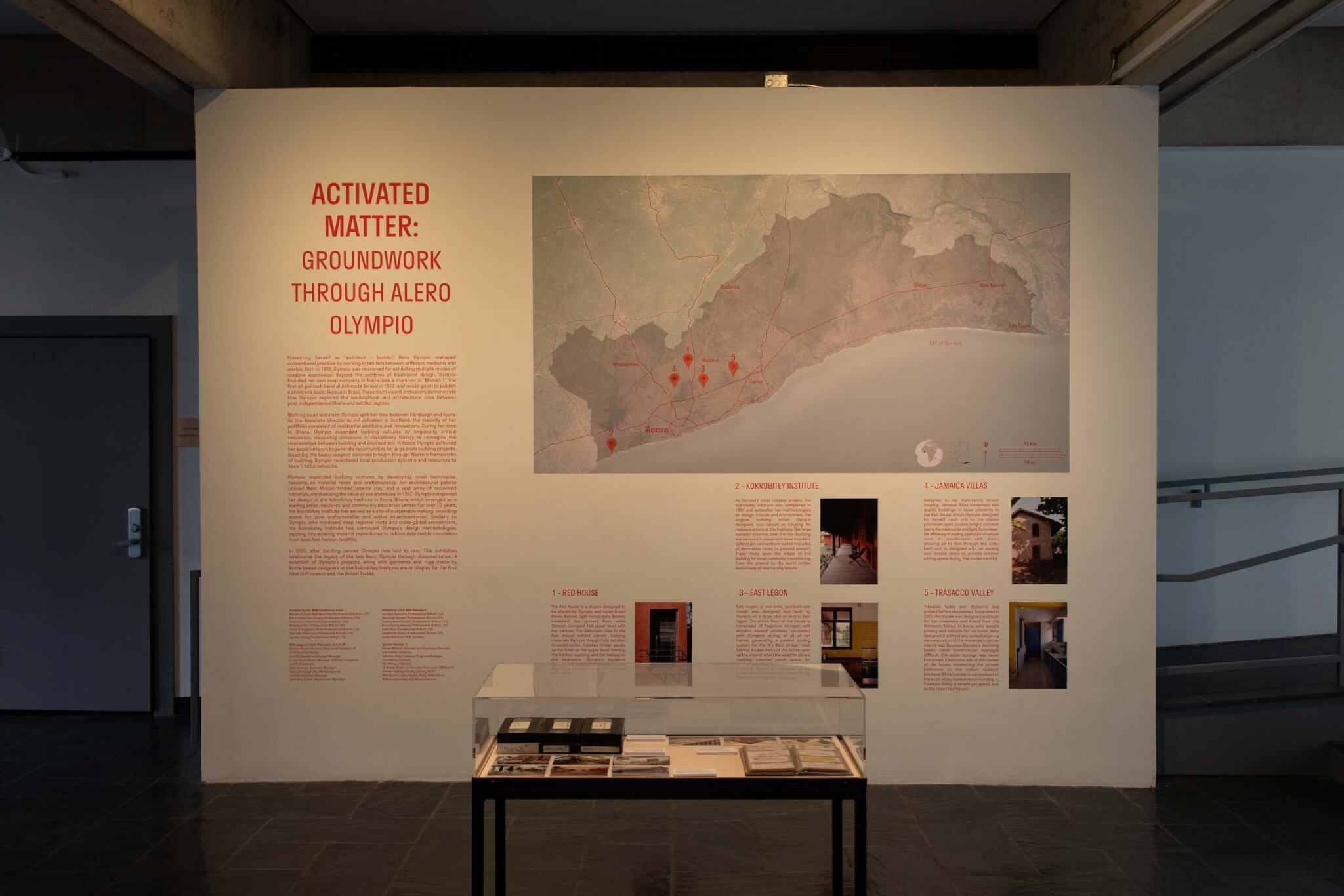
Over the course of two days, February 29 an March 1, some of her closest friends, colleagues, and mentees came together for a series of panel discussions and an exhibition honoring the ways in which Olympio advanced not just the practice of sourcing and building locally, but also the communities that such buildings serve, shelter, and educate. Speakers included Renée Neblett, Baerbel Mueller, DK Osseo-Asare, Juliet Sakyi-Ansah, Nana Biamah-Ofosu, Erandi de Silva, Dr. Kuukuwa Manful and John Ennis, with a keynote presentation the evening prior by Professor Lesley Lokko.
Neblett, Olympio’s longtime collaborator and close friend, introduced the audience to the context, history, and the “symbols of westernness”—from junk food to piping hot corrugated tin roofs over unfinished concrete walls—that need to be uprooted from postcolonial West Africa. “In the postcolonial era, the formerly colonized became the agents of their own oppression,” Neblett said. “And that raised the question: How do you break free from yourself?”
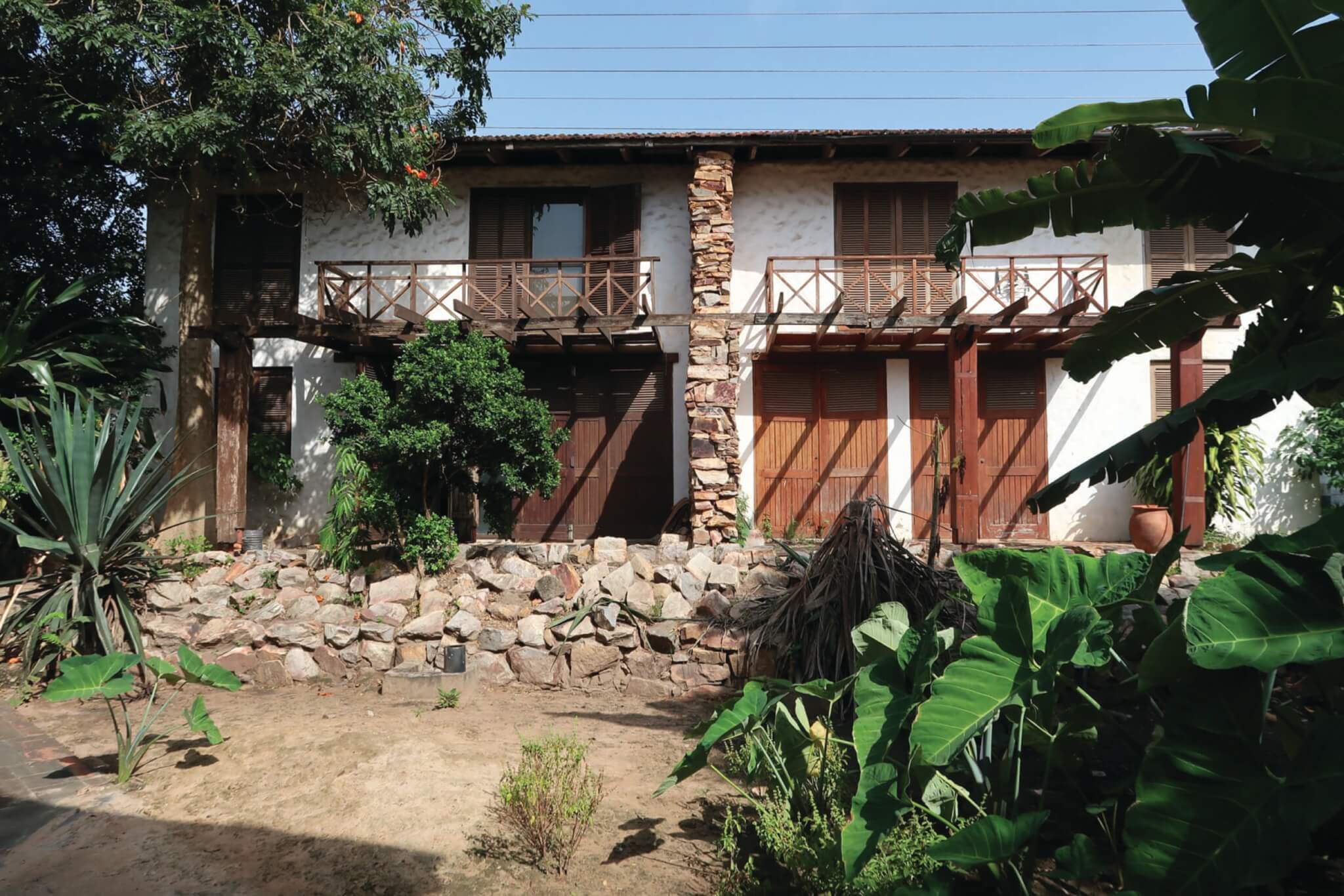
Three panels expanded on the impact of Olympio’s legacy: Uncommon Constructions, Social Transformations, and Restructuring Practices. Muller spoke of her teaching practice in Ghana and how working on the ground with her students has led to inclusive environments, typological translations, and applied material research. She and her students evolve the use of materials from compressed earth bricks and upcycled tires to transplanting trees from the Netherlands.
Biamah-Ofosu presented her research on Ghanaian compound houses and traditional Asante buildings as a typology, arguing also that Olympio’s “understanding of the ground” can inform the future of housing and urban planning. Sakyi-Ansah’s participatory practice, like Olympio’s, encourages Ghanaians to actively recognize their own potential in driving environmental and social change. Osseo-Asare, whom Olympio called “littler brother,” reflected on the importance of holding onto memories, specifically in your mentor-mentee relationships, and bringing that with you and into practice.
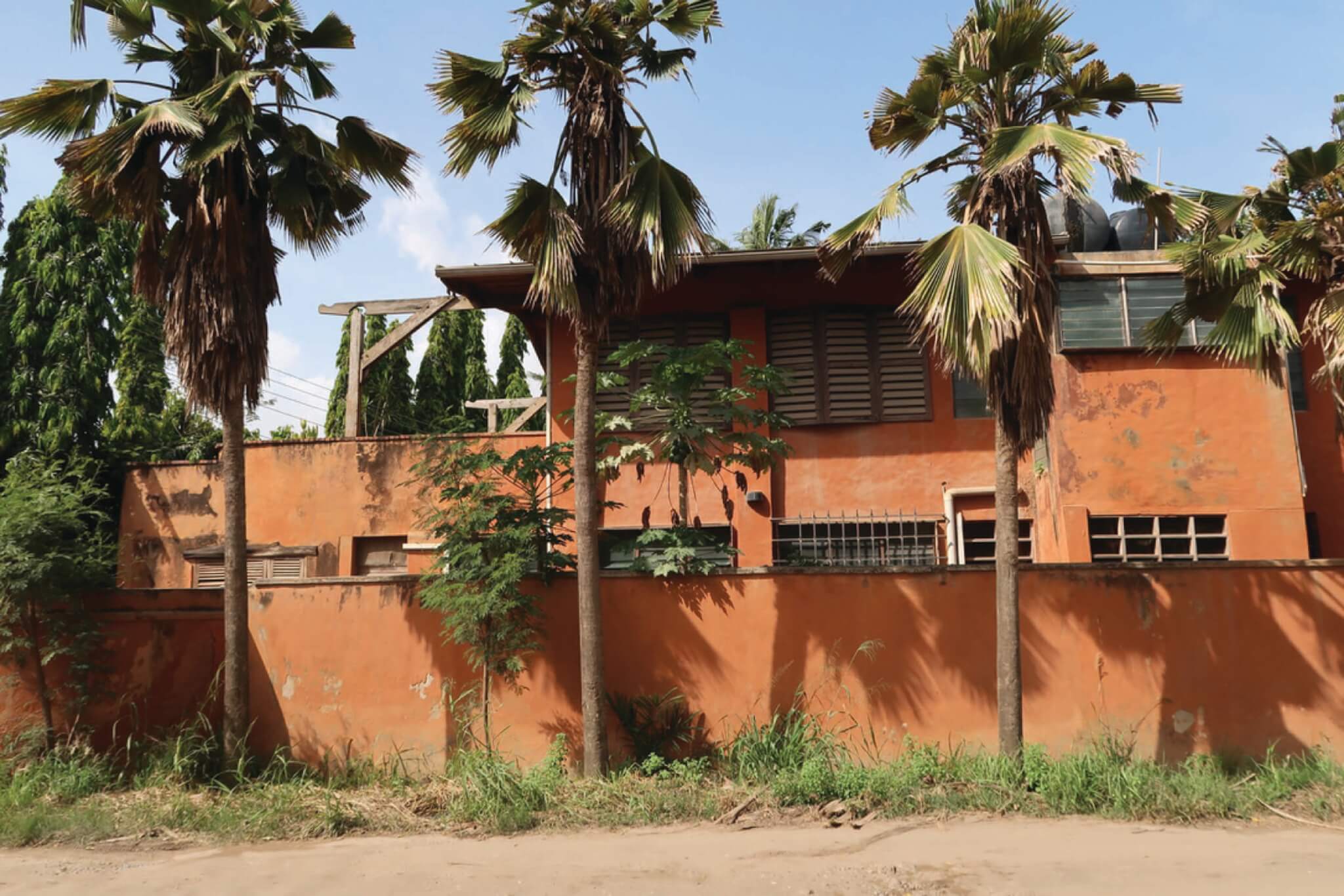
A temporary exhibition resulted from an unprecedented request from the WDA to travel to Ghana to conduct field work to inform the show and archive. Graduate student and WDA member Julia Chou met with Neblett at the Kokrobitey Institute (KI) in a coastal village west of Accra. Neblett and Olympio cofounded the institute in the early 1990s to uncover and highlight the culture and knowledge systems embedded in the African continent despite centuries of oppression and attempts at eradication.
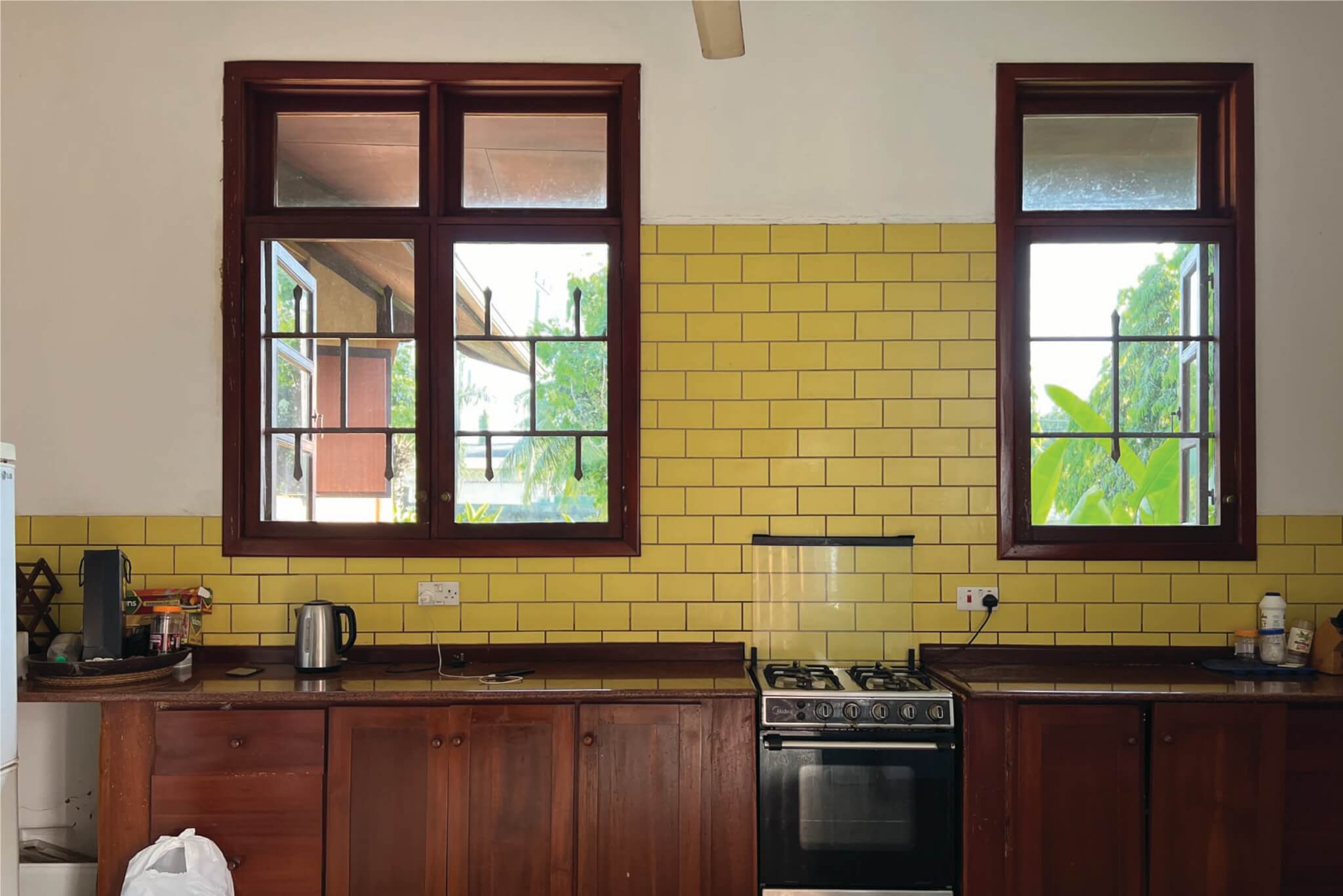
A selection of photographs taken by Chou detailing the most important buildings of Olympio’s career were arranged in a grid and included the architecture of the KI, the multifamily Jamaica Villas, the Red House duplex, the East Legon single-story house, and the more luxurious house in Trasacco Valley, Olympio’s final project. Photos of the process of building the KI showed the use of laterite clay and custom-built earth bricks pressed into shape with a machine sourced by Olympio and Neblett from India. VHS tapes, Olympio’s packed Rolodex, and archival photos courtesy of Neblett were on display for the first time at the SoA’s main corridor.
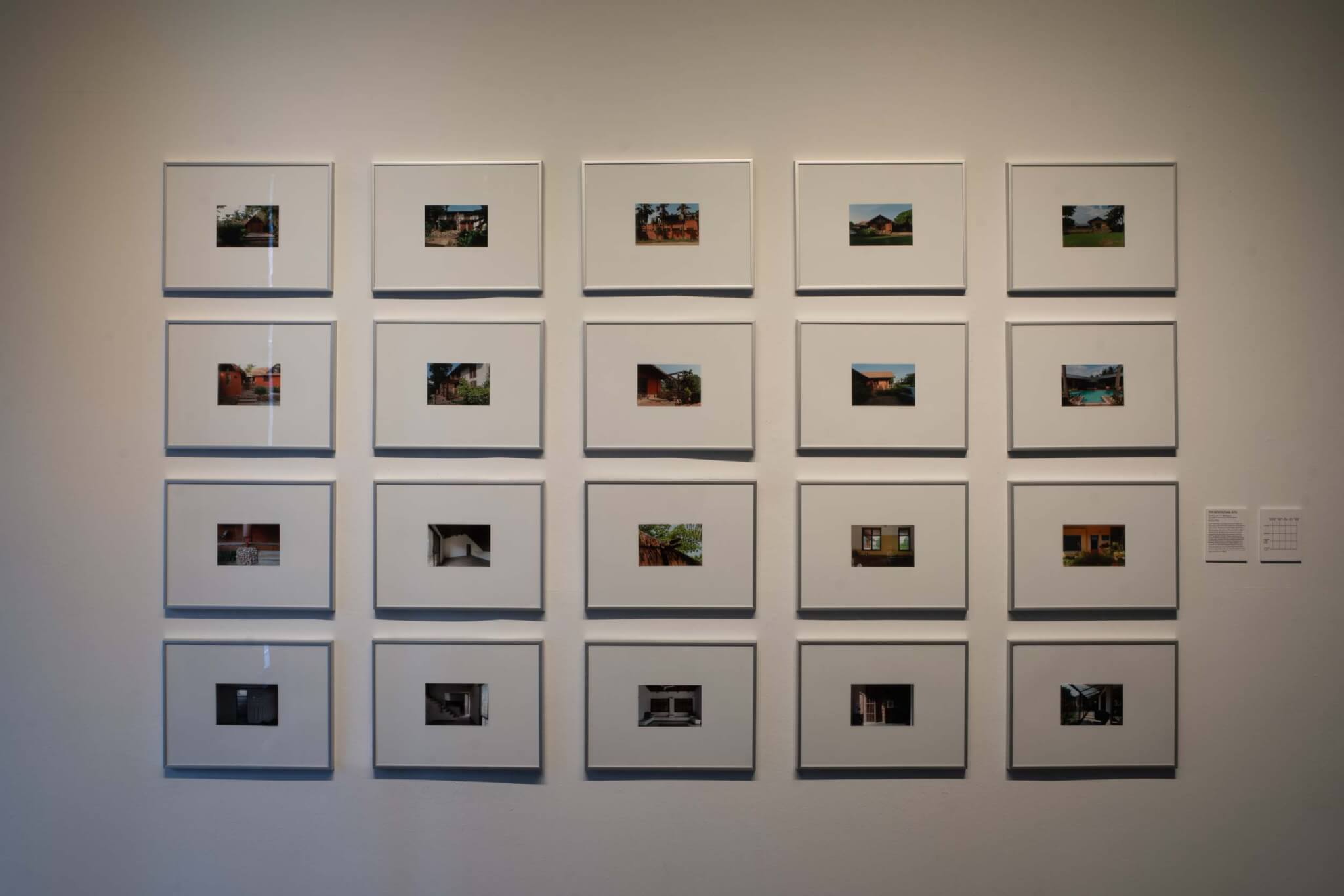
Central to the conversation during a Q&A following Biamah-Ofosu and de Silva’s presentations was a question posed by Lokko: Would the format of Olympio’s archive be different? “In the same way that her architecture was always searching for a different way to build, it seems to me that this is a brilliant [test] case,” she said. This prompted responses from members of the audience like V. Mitch McEwen advocating for Olympio’s queerness, and Mark Wigley suggesting the extension of the architectural project through oral history. To Biamah-Ofuso, people who knew or heard about Olympio are already putting this wisdom to work. “There’s something incredibly powerful and very situated about that way of gathering knowledge that is not to be seen as a secondary form of archiving.” And for Osseo-Asare, the archive has the potential of an active strategy to guide a better future for our planet. As Neblett said in her closing statement, “When we center people, we automatically become socially responsible. We become environmentalists. We become humanists. Because then, like Alero Olympio, we start to see the world in everything we do.”
Natalia Torija Nieto is a freelance architecture and design writer based in New York.











